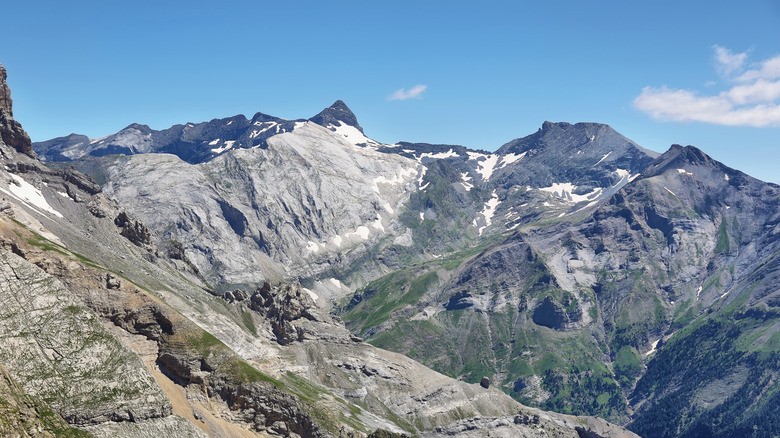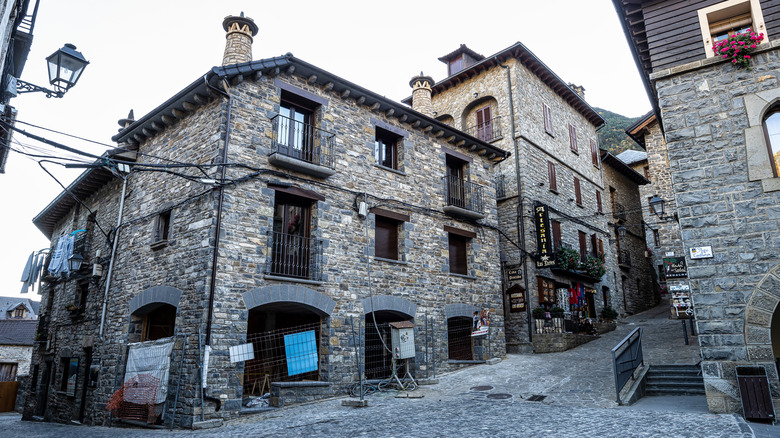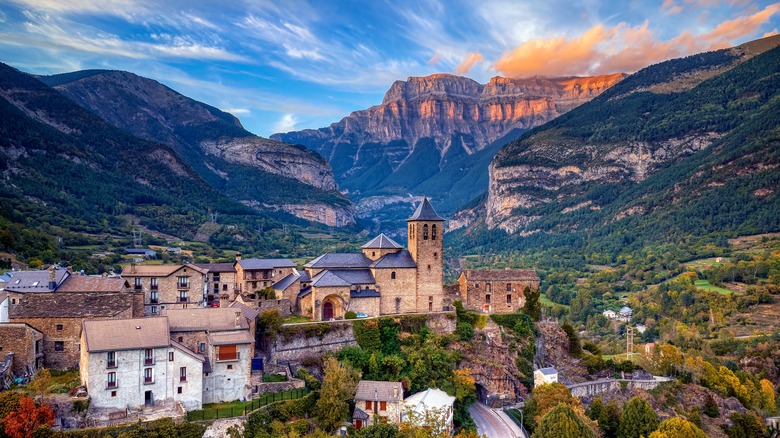For many people, a trip to Spain is synonymous with sun, sand, and sea, and millions of tourists flock to its beaches and islands for a summer vacation each year. The favorable climate certainly makes the coast of Spain and its surrounding islands a great destination, yet some of the country’s most spectacular natural wonders are to be found further inland. On the Iberian Peninsula, Spain’s national parks range from the lakes of Aigüestortes i Estany de Sant Maurici and the wildlife-rich marshlands of Doñana to the Pyrenean region of Ordesa y Monte Perdido National Park. The gateway to the latter is the small village of Torla-Ordesa, a place that looks like something from a fairytale.
Once lauded for repelling French invaders in the 16th century, the village retains much of its medieval charm. It stands in a lush valley, set against the dramatic rocky backdrop of the mountainous national park. It feels a world away from Zaragoza to the south and Barcelona, a four-hour drive away on the coast to the east, but that isn’t to say Torla-Ordesa is without its creature comforts. Although the village is home to only around 300 people it is well geared towards catering to visitors, making it the perfect base camp for exploring the stunning landscape.
Things to see and do in the National Park

The Ordesa and Monte Perdido National Park is an area of breathtaking natural beauty, from its snowy peaks and vertiginous ravines to its sweeping forests, sparkling rivers, and idyllic waterfalls. The Park covers around 96 square miles, making it a little larger than Mammoth Cave National Park in the United States. The region’s natural resources are protected as one of Spain’s 53 Biosphere Reserves and designated a UNESCO World Heritage Site in 1997.
A mountainous area like this is a haven for hikers and climbers and the Pyrenean region is home to Monte Perdido (11,007 feet), the country’s seventh-highest peak and the third tallest in the Pyrenees. It’s a manageable but challenging hike that can be done in 12 hours but preferably accomplished over two days, so you might want to book yourself into the Refugio de Góriz if you want a little overnight comfort rather than camping out.
Other highlights include Añisclo Canyon, a spectacular gorge carved through the rock by the Bellós River; it’s a popular spot for canyoning if you have a sense of adventure and don’t mind getting wet. Twitchers and those with an eye for wildlife will enjoy the untamed landscape of Escuaín Gorges, where you can spot bearded vultures native to the region.
Enjoying fairytale Torla village

Modern-day Torla-Ordesa’s quaint and cozy feel belies its old reputation as a key stronghold against the French; its name is derived from the Spanish word Torre, or Tower, although the namesake fortification is unfortunately long gone. There are still some wonderful historical sights to see such as the Church of San Salvador, which stands proud on its rocky outcrop as the star of the show in just about every photo of the village. Nearby are the ruins of a castle, another hint towards Torla’s military past.
For most visitors, the main pleasure of the village is simply wandering the steep cobbled streets and just soaking up the atmosphere and the architecture, which has peculiar features like medieval witch-scarer chimneys, designed to keep out evil-doers. On the outskirts is a visitor’s center for the National Park, which is a useful resource for planning your expeditions in the mountains and valleys.
If you are planning to stay for a few days, you have quite a few choices for such a small town ranging from the old-world charm of Hotel Edelweiss to the rustic Hotel Villa Russell. Decent eats are to be found at the historic Restaurante El Duende, serving Mediterranean fare and a good selection of wines, or Asador La Cocinilla, which offers stylish modern Spanish cuisine. Wherever you choose to stay and eat in Torla-Ordesa, you’ll be well-fed and rested before heading out into the wilds of the National Park.

